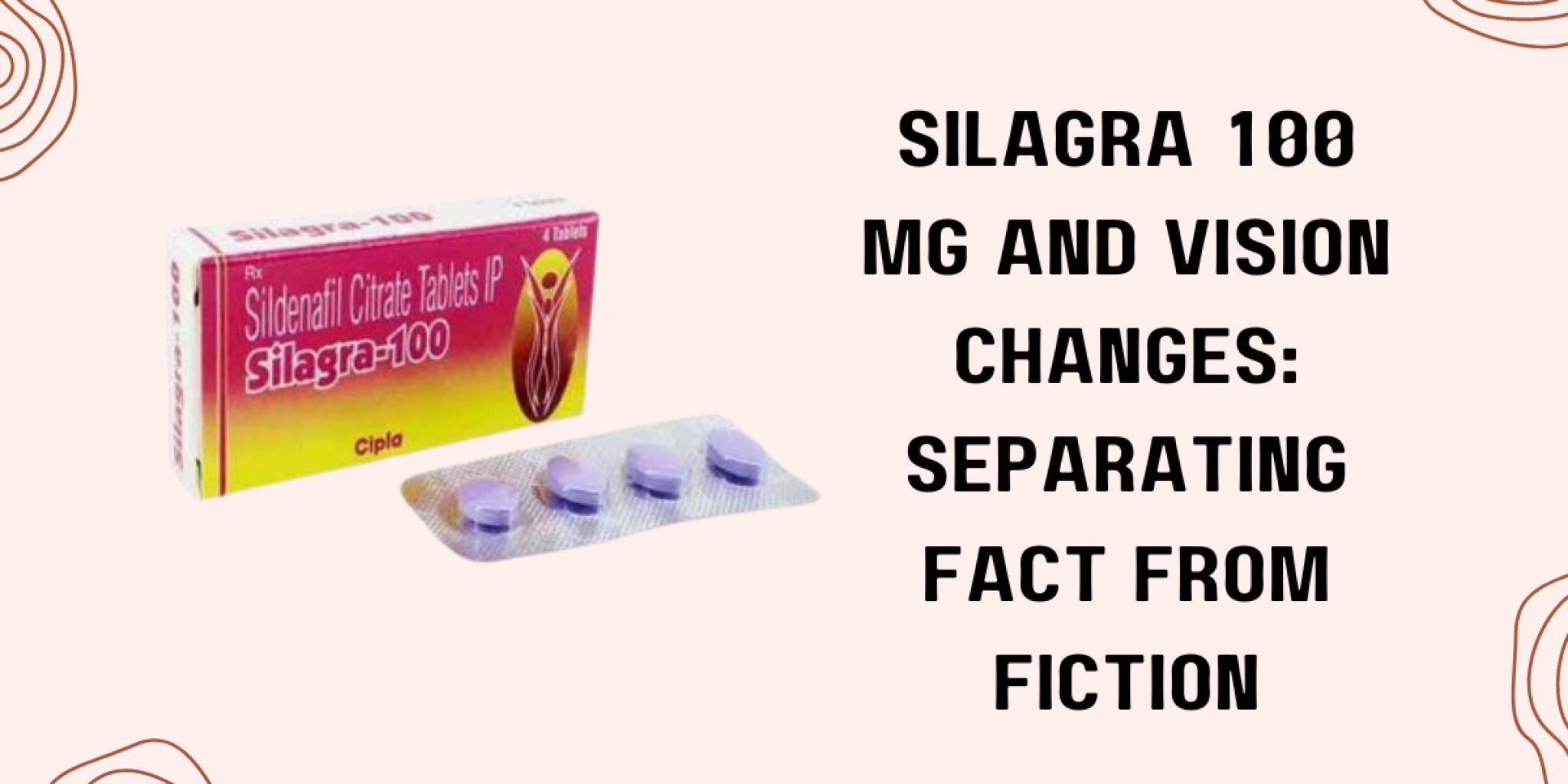Silagra 100 Mg and Vision Changes: Separating Fact from Fiction from Jonis's blog

When it comes to medications for erectile dysfunction (ED), Silagra 100 mg often emerges as a popular choice. However, along with its efficacy in treating ED, there have been concerns raised regarding potential vision changes associated with its use. In this article, we aim to delve into the relationship between Silagra 100 mg and vision changes, separating fact from fiction.
Understanding Silagra 100 mg
Silagra 100 mg is a medication
belonging to a class of drugs known as phosphodiesterase type 5 (PDE5)
inhibitors. Its active ingredient, sildenafil citrate, works by increasing
blood flow to the penis, facilitating erections in men with ED. Typically,
Silagra is prescribed in a 100 mg dosage, although this may vary depending on
individual factors and the severity of ED.
As with any medication, Silagra
100 mg may cause side effects, ranging from mild to severe. Common side effects
include headaches, flushing, indigestion, and nasal congestion. However, among
the reported side effects, concerns about vision changes have sparked
particular interest and debate.
Vision Changes: Exploring the
Claims
Reports of vision changes
associated with Silagra 100 mg have led to speculation about its safety and
potential risks. These changes may include blurred vision, sensitivity to
light, and changes in color perception. However, it's essential to examine the
evidence available to understand the true nature of these claims.
Clinical studies and trials have
been conducted to assess the safety profile of Silagra 100 mg, including its
impact on vision. While some studies have reported instances of vision changes
among participants, it's crucial to differentiate between correlation and
causation. In many cases, vision changes may be a result of underlying
conditions or other factors unrelated to Silagra usage.
Addressing Misconceptions
Despite scientific evidence
indicating a lack of direct causation between Silagra 100 mg and vision
changes, misconceptions persist. Myths surrounding the medication's supposed
detrimental effects on vision continue to circulate, fuelled by misinformation
and anecdotal accounts.
It's essential to debunk these
misconceptions with factual information grounded in scientific research. By
doing so, we can help individuals make informed decisions about their
healthcare and alleviate unnecessary concerns about Silagra 100 mg's safety.
Risk Factors and Precautions
While Silagra 100 mg is generally
well-tolerated, certain individuals may be at higher risk for experiencing
vision changes or other side effects. Factors such as age, pre-existing eye
conditions, and concurrent medication use can influence an individual's
response to Silagra.
As a precautionary measure,
individuals considering Silagra 100 mg should consult with their healthcare
provider. Healthcare professionals can assess their medical history, risk
factors, and suitability for the medication, providing personalized guidance
and recommendations.
Alternative Explanations for
Vision Changes
It's essential to consider
alternative explanations for vision changes reported by individuals using
Silagra 100 mg. Lifestyle factors such as smoking, alcohol consumption, and
poor diet can contribute to vision problems. Additionally, underlying health
conditions such as diabetes and hypertension may affect ocular health independent
of medication use.
By addressing these alternative
explanations, we can contextualize the reported vision changes and avoid
attributing them solely to Silagra 100 mg.
Patient Experiences and
Testimonials
Real-world feedback from
individuals who have used Silagra 100 Mg
can offer valuable insights into its effects on vision. While anecdotal
evidence should be taken into account, it's essential to balance it with
scientific data and clinical findings.
Understanding that experiences
may vary among individuals can help temper expectations and foster open
dialogue between patients and healthcare providers.
Conclusion
In conclusion, while concerns
about vision changes associated with Silagra 100 mg are understandable,
separating fact from fiction is crucial. By examining the available evidence,
addressing misconceptions, considering risk factors, and acknowledging
alternative explanations, we can provide a comprehensive understanding of
Silagra 100 mg's safety profile. Ultimately, informed decision-making guided by
healthcare professionals is paramount in ensuring safe and effective treatment
for erectile dysfunction.
Post
| By | Jonis |
| Added | Mar 25 |
Tags
Rate
Archives
- All
- November 2024
- October 2024
- September 2024
- August 2024
- July 2024
- June 2024
- May 2024
- April 2024
- March 2024
- February 2024
- January 2024
- December 2023
- November 2023
- October 2023
- September 2023
- August 2023
- July 2023
- June 2023
- May 2023
- April 2023
- March 2023
- February 2023
- January 2023
- December 2022
- November 2022

The Wall